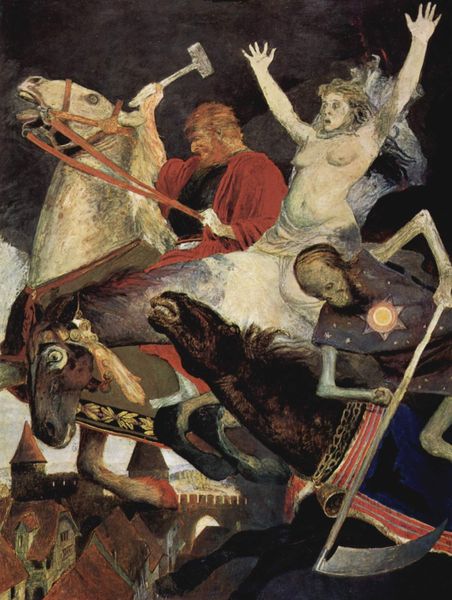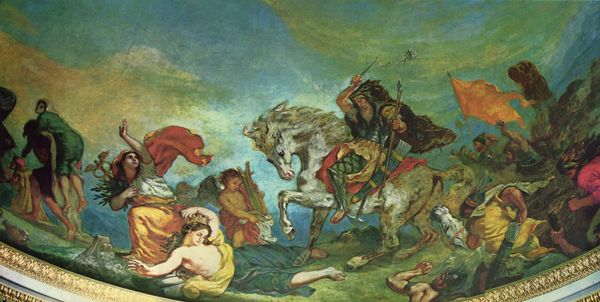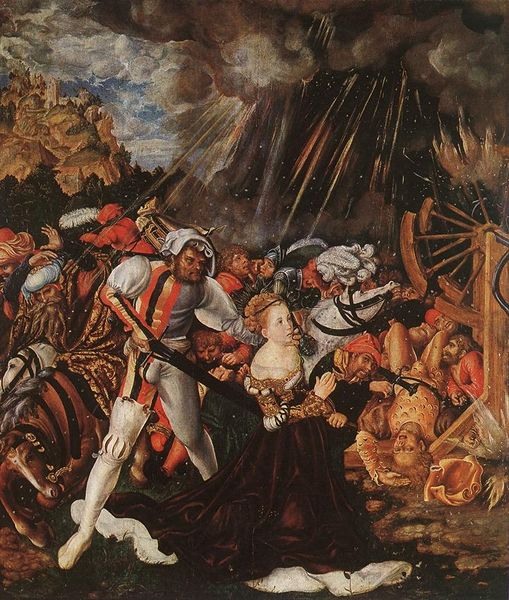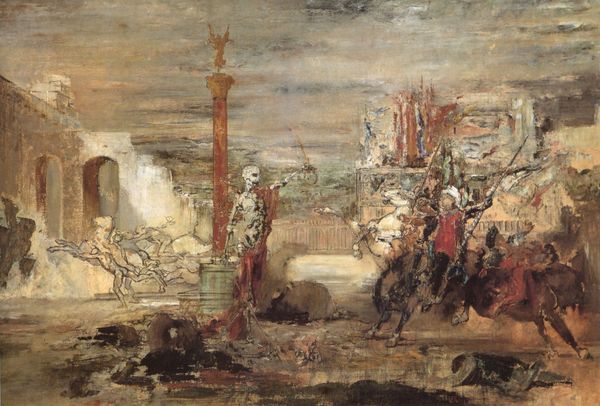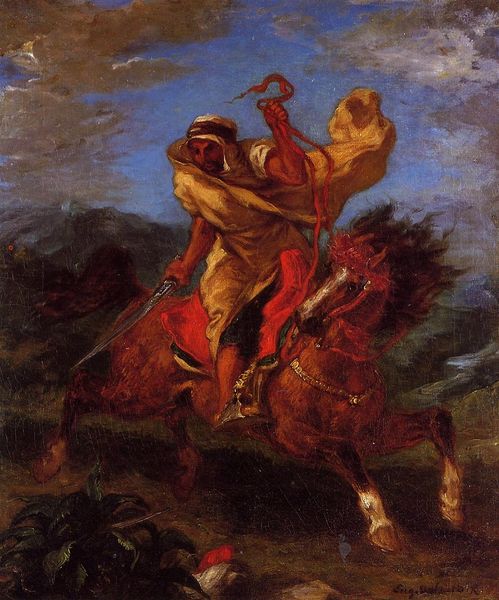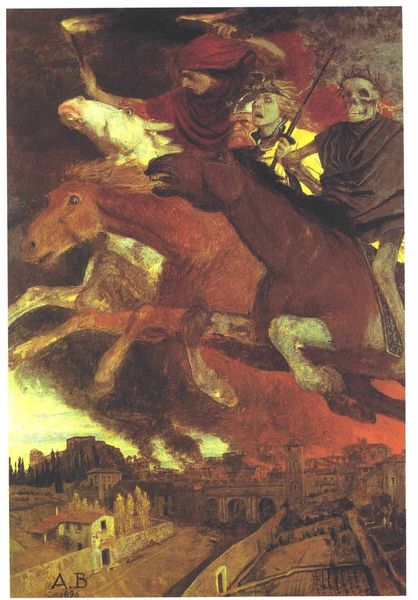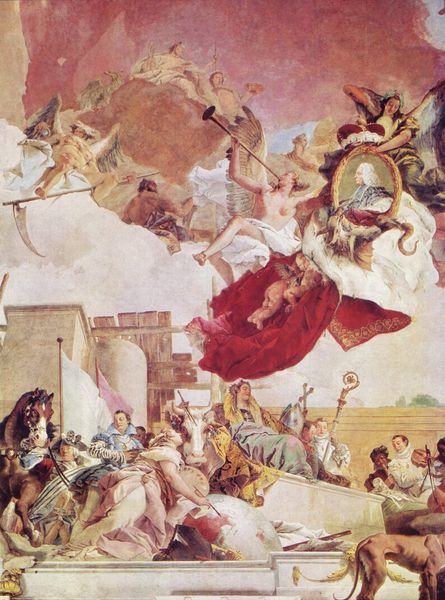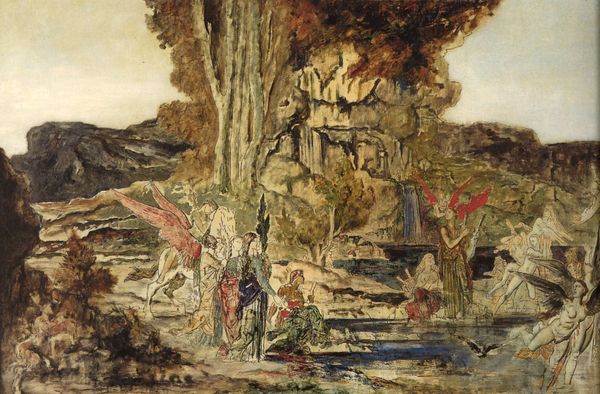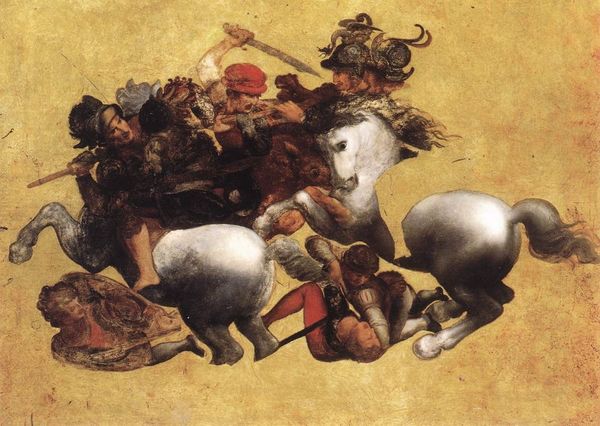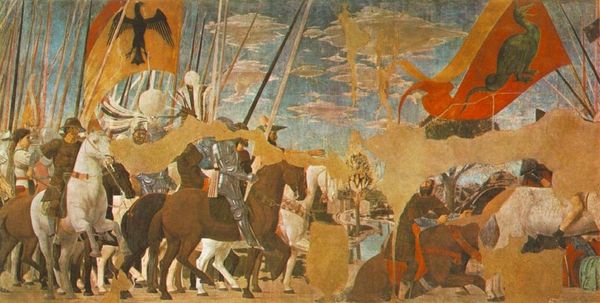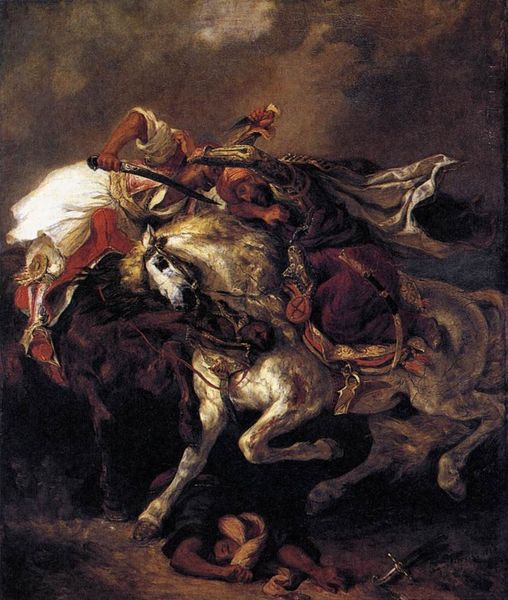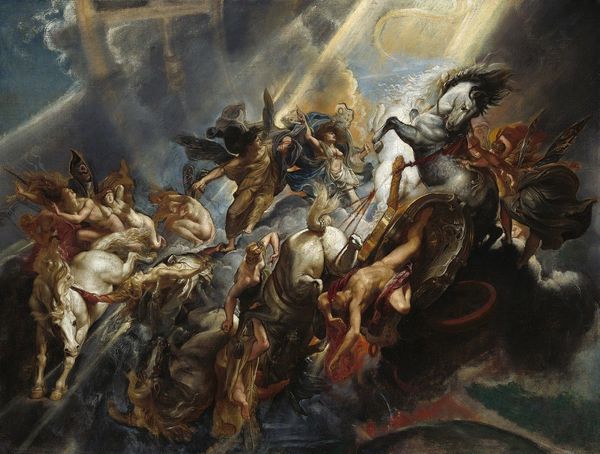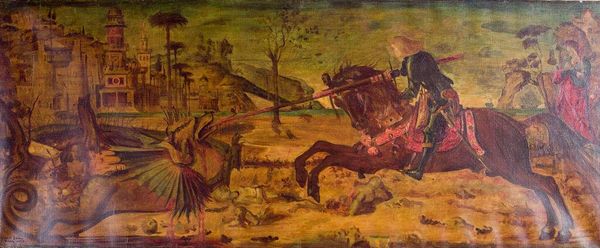
painting, oil-paint
#
allegories
#
allegory
#
symbol
#
painting
#
oil-paint
#
war
#
landscape
#
figuration
#
oil painting
#
symbolism
#
history-painting
Copyright: Public domain
Curator: We're looking at "Study to 'War'," an 1896 oil-on-canvas piece by Arnold Böcklin. It's a compelling, almost frightening image. Editor: Frightening is right. It has this swirling vortex of figures above a disturbingly still cityscape, like a nightmare hovering over reality. What's going on? Curator: Well, Böcklin often explored themes of death, the plague, and war, reflecting anxieties of his time. Here, we see chaotic figures on horseback dominating the upper portion. The textural brushwork gives it a frenzied energy, the pallette conveying urgency and dread. Editor: So, the frenzied energy… I wonder about the intended audience and the historical context. Was there a particular conflict or socio-political tension that Böcklin was reacting to? The work predates WWI but has the sense that something apocalyptic is building, is it related to fin-de-siècle anxieties of impending disaster? Curator: That’s quite possible. The use of symbol reinforces that; those figures can be interpreted as allegories of violence, domination, and destruction let loose upon the world. The muted color palette, dominated by browns and greys, adds to the sense of decay and despair, but punctuated by strokes of vibrant red. The entire picture plane suggests the forces bearing down upon human civilization. Editor: I wonder how viewers in his time would have reacted to it. The composition itself seems quite unconventional for historical painting, the weight and details skewed to the top, while the figures and buildings below are murky and almost vague. Curator: Yes, and it could have struck a chord. The industrial revolution, urbanization, and rapid social changes brought uncertainties that are manifest throughout the visual symbols. Art, during Böcklin's life, became a stage of public anxieties and philosophical debate about civilization. The stark contrast in values forces one’s eye upward into that terror. Editor: That's really interesting. This makes me appreciate how powerfully this work taps into universal fears. Curator: Precisely, it serves as an enduring commentary on the human capacity for both creation and self-destruction, but one that should never have been glorified. Editor: Thank you. A perfect example of the horrors of war captured with visual depth.
Comments
No comments
Be the first to comment and join the conversation on the ultimate creative platform.
